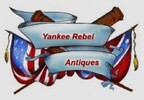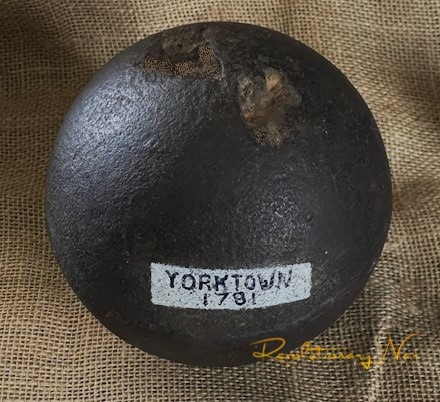 Loading... Please wait...
Loading... Please wait...-
Call us on (973) 810-2976
- My Account
- Gift Certificates
- Items / $0.00
All prices are in All prices are in USD
Categories
- Home
- Sold, Hold, Layaway items
- RARE – Revolutionary War 32-pounder Cannonball, recovered at Yorktown, VA (ON HOLD)
RARE – Revolutionary War 32-pounder Cannonball, recovered at Yorktown, VA (ON HOLD)
Out of Stock
Product Description
Over the past several years I have been very fortunate in making available Revolutionary War artifacts, especially cannonballs. This is the largest one that I have listed, it is a 32-pounder solid-shot ball, which would have been fired from a 32-pounder cannon. It has a diameter of 6 1/8” and weighs almost 28 pounds. It has a very pronounced mold seam and some of the area where the sprue is located has blown off during firing. It was recovered many years ago from the Yorktown, Virginia Battlefield.
Major General Marquis de Lafayette and his troops constituted at least half of the allied forces surrounding Yorktown. This meant that the French occupied at least half of the bulwarks surrounding Yorktown. In fact, Washington did not have sufficient troops to encircle Yorktown. Cornwallis and his troops would surely have escaped to New York, had it not been for the presence of the French troops.
On October 3rd, 1781, Allied Forces [American and French] met a force sent by Cornwallis at what became the Battle of the Hook in which the British were driven from Glouster to Yorktown. A French Navy fleet arrived in time to chase off a fleet of British ships that were to rescue Cornwallis and his troops from their dangerous position at Yorktown.
On Oct. 9, 1781, Washington himself fired the first American cannon at the Siege of Yorktown. With the ceremonial shot, one member of the Continental Army remembered, “Earl Cornwallis has received his first salutation.” The artillery barrage from 155 French and American howitzers, cannons, and mortars continued for the next 11 days. At the height of the siege, Allied artillery fired as many as 1,500 rounds each day, more than one round per minute.
The British surrendered at Yorktown 244 artillery pieces of mainly lightweight field cannon. These had been ineffective against the enemy’s earthworks. While General Washington’s forces had considerably fewer pieces— approximately 131— it was their superior number of siege guns and their skilled gun crews, such as Colonel Lamb’s Artillery, that made the difference.
There is a reason for this cannonball being somewhat inferior, it was the lack of Ordnance inspections. Leading up to the Battle of Yorktown, the Americans were experiencing a shortage of artillery and ammunition. Due to the supply issues, the demand for ammunition exceeded the typical quality control. There was no time for inspectors to give the proper examination needed, so without these inspections, inferior cannonballs were just passed through to the front.
This is a great looking cannonball and in very nice condition overall with a lot of character. I will include a Certificate of Authenticity with the ball.



